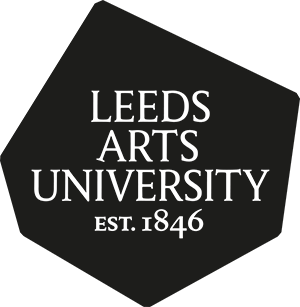Dr Sherylle Calder has an on line eye gym and if you go there you can test out your own ability to see and recognise situations quickly. It is very revealing and makes you aware of how little time we spend exercising our eye/brain responses, particularly when we spend so much of our time handling dangerous machinery such as cars and other mechanical constructs that demand that we stay in a state of controlled awareness for long periods of time.
The speed of reaction of ball players used to be a constant topic of conversation in those long ago days of teaching drawing. Visual and spatial awareness was at the core of so much of what we did, the making of images being subordinate to the construction of visual fields of engagement.
The drawing above by Hofmann shows how this type of awareness often began to be transcribed into drawings. The placement of forms such as triangles and lines, is composed in such a way that they combine to make rhythmic shapes that keep the eye moving through the drawing. I well remember Oliver looking in students' drawings for 'enclosed' or 'trapped' forms, i. e. these would be shapes that locked the eye movement into them and so held the looking in one spot. These would have to be broken, so that the eye movement could continue to revolve around the image. He was very critical of what he called the centralised image, something I am now very interested in, but which in those days would have been criticised because it did not generate action for the eyes. The central image it was argued, prioritised the verbal language element of thinking, therefore removed the eye/brain from experiencing the space / form of the image as the brain moved into thinking about the semiotics of the image rather than the experience of the moment.
Looking back to that time I'm now more aware of a political stance that related to this position. Fixed images could be seen as commodities that could then be sold. The flux of experience was much harder to sell.
The painting above was made by Oliver in the early 1980s and is typical of his approach. You are meant to re-experience a ride through the Irish landscape, the colour being as much about treading in a cowpat when you dismounted from your motorbike, as looking up at a blue sky or seeing hills in the distance. The totality of the experience was something Oliver believed he could re-create in paint.
At the time I loved the epic romanticism of the man, his firm belief in the power of painting to re-create experience and to provide an arena for the eyes to exercise themselves within. It was always 'eyes', the old principal of the art college Frank Lisle had lost one eye during the second world war and Patrick would accuse him of no longer being able to paint properly because of this. The spaces in these paintings were designed for bi-focal vision, angle of line and form as well as surface adjustment being designed to trigger mental spaces as the two eyes attempted to focus. Oliver would demonstrate this in the studio by getting students to watch him trying to pull apart two straight edges, such as two lengths of 2 x 1 timber. He would say that they were stuck together by a very sticky invisible substance, but if he pulled hard enough he could separate the edges, but this would leave between them a plane composed of a very taut surface of infinitely thin invisible glue. He would then mime a struggle to separate the two lengths of timber, finally shaking with the effort he would not just separate them but would then twist them in relation to each other. "Now", he would say "how do you see the space between these two timbers?"
There is still a memory of those times in the back of my head every time I draw. I'm now once again attracted to the issues associated with a word bound experience and how to go beyond them, but am looking at the resolution from a more 'vibrant materialist' perspective. Those times had a very interesting approach to the problem and I think it has reemerged as an aspect of speculative realism and other approaches to materialist thinking. I am also putting up this post as a reminder that old experiences are never 'wrong' just simply other worlds waiting to reemerge as fresh made for another time.
See also:
Eye tracking technology
The hard won image
Other posts about teaching during the 1970s and 80s.
More on pulling space apart in a flat drawing
How to address the paper surface
































